- Blogs
- The Essential Guide to Insulating Your Return Ducts in the UK
The Essential Guide to Insulating Your Return Ducts in the UK

When it comes to heating and cooling your home efficiently, every detail counts, including the insulation of your return ducts. But do you really need to insulate these ducts in the UK? Let’s dive into the importance of duct insulation, the benefits it brings, and how it can save you money in the long run.
The Importance of Duct Insulation
Insulating your return ducts is more than just a building standard; it’s a strategic move to enhance your home’s thermal efficiency. In the UK, where temperatures can fluctuate significantly, the role of insulation becomes even more pronounced. Properly insulated ducts ensure that the air travelling through your HVAC system retains its temperature, be it warm or cool, thereby reducing the workload on your heating and cooling systems.
Why Insulate Return Ducts?
Insulating return ducts is a key factor in achieving an energy-efficient home. It’s not just about keeping the air at the desired temperature; it’s about the overall integrity of your heating, ventilation, and air conditioning (HVAC) system.
![Flexible Insulated Ducting]() Temperature Control and Energy Efficiency
Temperature Control and Energy Efficiency
The primary purpose of insulating return ducts is to maintain strict temperature control. In the UK, where weather can be unpredictable, having well-insulated ducts means the air that your HVAC system works so hard to heat or cool doesn’t go to waste. This is particularly important for return ducts, which carry the air back to the HVAC system to be reconditioned.
The Consequences of Poor Insulation
Without proper insulation, return ducts can lose a significant amount of the conditioned air through leaks and gaps. This loss forces your HVAC system to work harder to maintain the set temperature, leading to increased energy consumption and, consequently, higher utility bills. Moreover, the comfort of your living environment is compromised as temperatures fluctuate due to the loss of conditioned air.
The Financial Impact
The financial implications of uninsulated return ducts are twofold. Firstly, there’s the immediate impact on your energy bills. The more your system has to work to compensate for lost air, the more you’ll pay each month. Secondly, there’s the long-term effect on your HVAC system itself. Systems that are overworked due to poor insulation are more likely to suffer wear and tear, leading to costly repairs or even premature replacement.
Understanding Duct Insulation
When considering insulation for your home’s ductwork, it’s essential to understand the options available and how they can benefit your HVAC system. Here’s different types of duct insulation commonly used in the UK.
Types of Duct Insulation
Duct insulation comes in various forms, each designed to improve the efficiency of your HVAC system by reducing heat loss or gain through the ductwork. The most common types include:
-
Fibreglass Duct Liners and Wraps: Fibreglass is a popular choice due to its excellent thermal and acoustic properties. It’s available in different thicknesses and densities, making it versatile for various applications. While it’s effective in reducing heat transfer and dampening sound, it requires careful handling and appropriate personal protective equipment during installation.
-
Polyethylene Foam: This lightweight, closed-cell foam offers good thermal resistance and some moisture protection. It’s a suitable option for HVAC systems, providing a balance between performance and cost.
-
Reflective Systems: These are designed to reflect radiant heat away from the ducts, helping to keep the air inside at a consistent temperature. They’re often used in conjunction with other insulation types for enhanced performance.
-
Mineral Wool: Known for its fire-resistant properties, mineral wool is another effective insulator for ducts. It’s denser than fibreglass and can provide both thermal and acoustic insulation.
![Ecotec Duct Insulation Kit]() Sealing vs. Insulating
Sealing vs. Insulating
Before you can even think about insulating your ducts, sealing them is an imperative step that cannot be overlooked. Here’s why sealing is crucial and how to go about it effectively.
The Necessity of Sealing Ducts
Sealing is the first line of defence against air leakage in your ductwork. It’s a preparatory step that ensures the insulation you apply afterwards will perform optimally. In the UK, where energy efficiency is key to managing heating costs, sealing ducts can make a significant difference in your home’s overall thermal performance.
Identifying Common Leak Points
Ductwork can have several common leak points, especially at joints, bends, and connections. These are the areas where two sections of ductwork come together and are most prone to gaps and air leakage. It’s essential to inspect these points thoroughly before proceeding with any insulation work.
Proper Sealing Techniques
To seal your ducts effectively, you’ll need to use the right materials and follow a meticulous process. Mastic sealant or specialised foil tape is commonly recommended for this task. The key is to ensure that all surfaces are clean and dry before applying the sealant. This will help the sealant adhere properly and provide a durable seal.
The Process of Sealing
The process involves applying the sealant or tape over every joint and connection, pressing it firmly to eliminate any air pockets and ensure a tight seal. It’s important to cover the entire surface area where air might escape. For added durability, some professionals recommend applying a layer of mastic over the tape.
The Role of Professional Assessment
While DIY sealing is possible, having a professional assess your ductwork can provide peace of mind. They can perform a duct leakage test to identify any leaks in your system and ensure that all potential leak points are properly sealed.
Sealing your ducts is a critical step that precedes insulation. It’s about creating a fully airtight system that allows the insulation to do its job effectively. By taking the time to seal your ducts properly, you’re setting the stage for enhanced energy efficiency and comfort in your home.
Environmental Impact
Insulating return ducts in your home goes beyond personal financial benefits; it’s a step towards environmental stewardship. By enhancing the energy efficiency of your heating and cooling systems, you’re actively reducing your carbon footprint. This reduction in energy consumption means fewer greenhouse gases are emitted into the atmosphere, contributing to the fight against climate change.
In the UK, where energy conservation is a priority, such measures are particularly impactful, aligning with national efforts to promote sustainability and protect our planet for future generations.
Conclusion
In conclusion, insulating return ducts in the UK is crucial for optimising home energy efficiency. Beyond temperature control, insulation safeguards HVAC systems, reducing energy consumption and utility costs. Choosing the right insulation type, coupled with thorough duct sealing, ensures maximum benefits.
The financial impact is immediate, with long-term benefits extending to HVAC system durability. Moreover, these measures align with the UK's commitment to sustainability, contributing to reduced carbon emissions and a more environmentally conscious future. Investing in duct insulation not only enhances personal comfort and savings but actively supports national initiatives for a greener, more resilient planet.

Samuel Hitch
Managing Director
Buy Insulation Online.
Leave A Reply
Your feedback is greatly appreciated, please comment on our content below. Your email address will not be published. Required fields are marked *
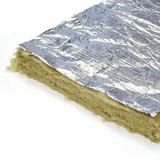
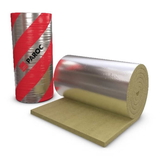
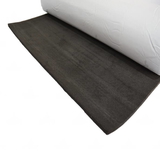
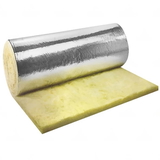
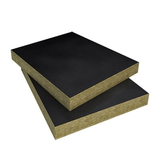
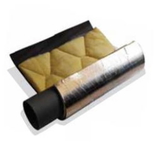
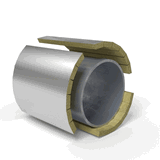
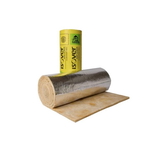
 Temperature Control and Energy Efficiency
Temperature Control and Energy Efficiency  Sealing vs. Insulating
Sealing vs. Insulating
































































































































































































































































































































































